The church of Santa Maria della Vittoria, or of the “Vittorina” as it is otherwise known, stands at the edge of a verdant park, dotted with olive trees, holm oaks and plane trees, that slopes down a gentle slope just outside the historic center of Gubbio. Here, where the busy and restful Park of Reconciliation now stands, tradition has it that, around 1220, St. Francis of Assisi tamed the fearsome wolf of Gubbio. We read, in Chapter XXI of the Fioretti, that at the time when St. Francis lived in Gubbio, the countryside around the city was shaken by the apparitions of a “very great, terrible and ferocious wolf, which not only devoured animals, but eziandio men, so much so that all the citizens were in great fear, however, that often approached the city.”
The wolf was so fearful that when it prowled Gubbio, no one dared to leave his house. St. Francis wanted to go out to meet it, despite the fact that the townspeople advised him against it: so, “making the sign of the most holy cross, he went out to meet it with his companions, all his confidence placing in God.” The wolf went to meet St. Francis, with his mouth open, “and approaching him, St. Francis made the sign of the cross to him, and called him to himself and said thus, ’Come here, brother wolf, I command you from the side of Christ that you do no harm either to me or to any person.’ Wonderful thing to say! As soon as Saint Francis had made the cross, the terrible wolf closed his mouth and refused to run; and having done the commandment, he came tame as a lamb, and threw himself at Saint Francis’ feet to lie down.” After taming him, St. Francis turned to the wolf and manifested his idea of wanting to forgive him and urge him to make peace with the Eugubinians, despite the fact that he had killed so many men. The wolf accepted the words of St. Francis by showing himself compliant with movements of his body, tail and ears, and Francis answered him, “Brother wolf, since it pleases you to make and keep this peace, I promise you that I will have the men of this land give you what is necessary continually, while you live, so that you will no longer suffer hunger; for I know well that through hunger you have done all evil. But since I bind this grace to thee, I will, brother wolf, that thou bind me that thou shalt not harm any human person or animal.” At the wolf’s signal of promise, the saint proposed to him to seal the pact: thus, “stretching out his hand holy Francis to receive his faith, the wolf lifted up his foot standing before, and dimly placed it over the hand of holy Francis, giving him what signal he could of faith.”
The episode allegedly took place right in front of the church of Santa Maria della Vittoria, whose origins date back to the 9th century, when it was built under Bishop Erfo to celebrate, according to tradition, a victory of the Eugubinians against a Saracen raid. St. Francis was granted use of the church in 1213 by Bishop Villano and the Benedictine monks who ran it, and the saint moved in with his companions: this was thus the first settlement of Franciscan friars. The latter would later move, in 1241, to the nearby convent of St. Francis, leaving Santa Maria della Vittoria to the Poor Clares, the order founded by Francis with St. Clare. The church’s importance grew in the seventeenth century, after Pope Paul V allowed the Compagnia della Vittorina, the confraternity to which the Poor Clares had granted the building in emphyteusis since 1538, to grant indulgences to anyone who visited the church on the day of the Divine Maternity of Mary (October 11): the frescoes of Franciscan stories that complete the interior decorations date from the seventeenth century.
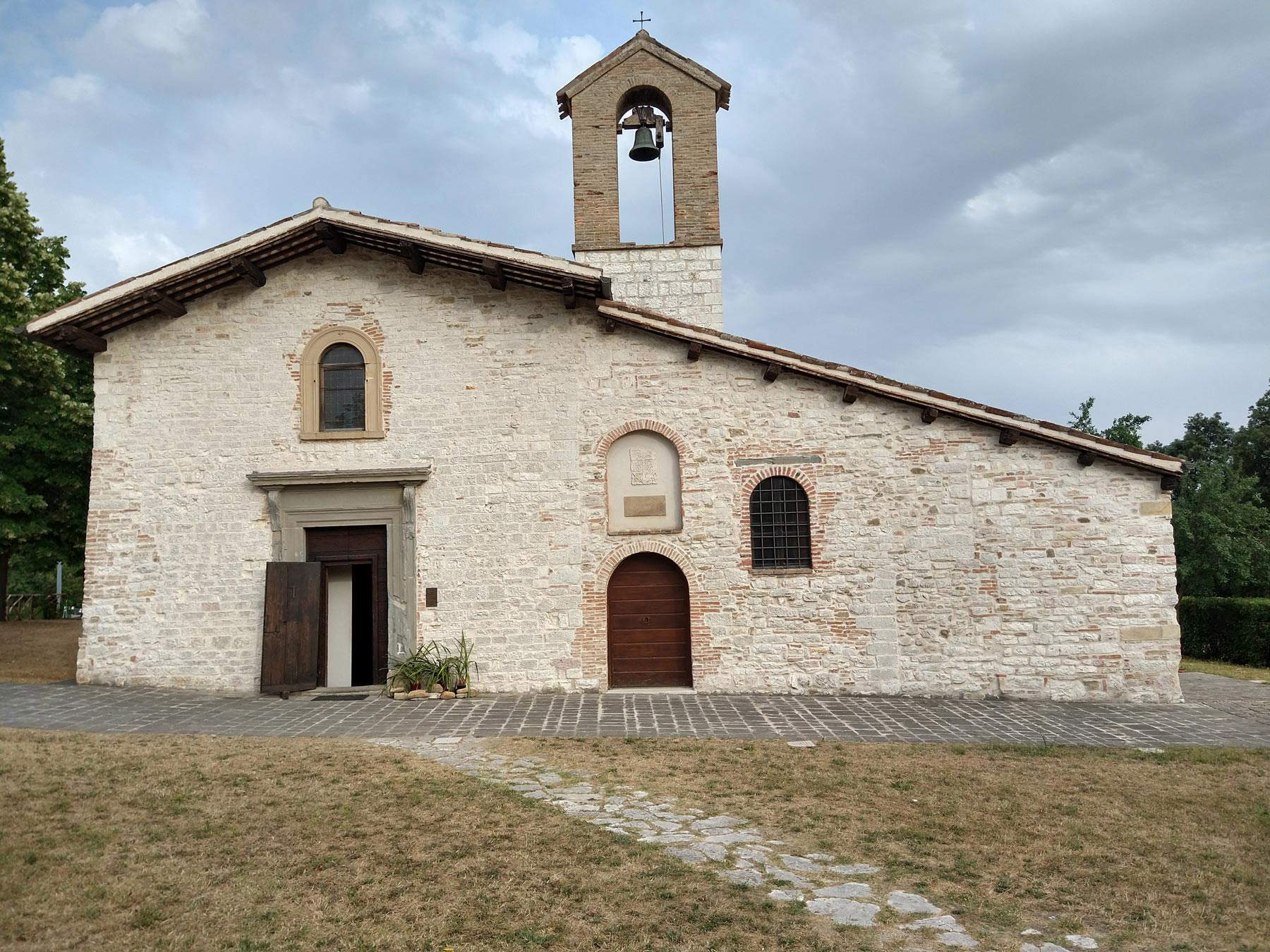
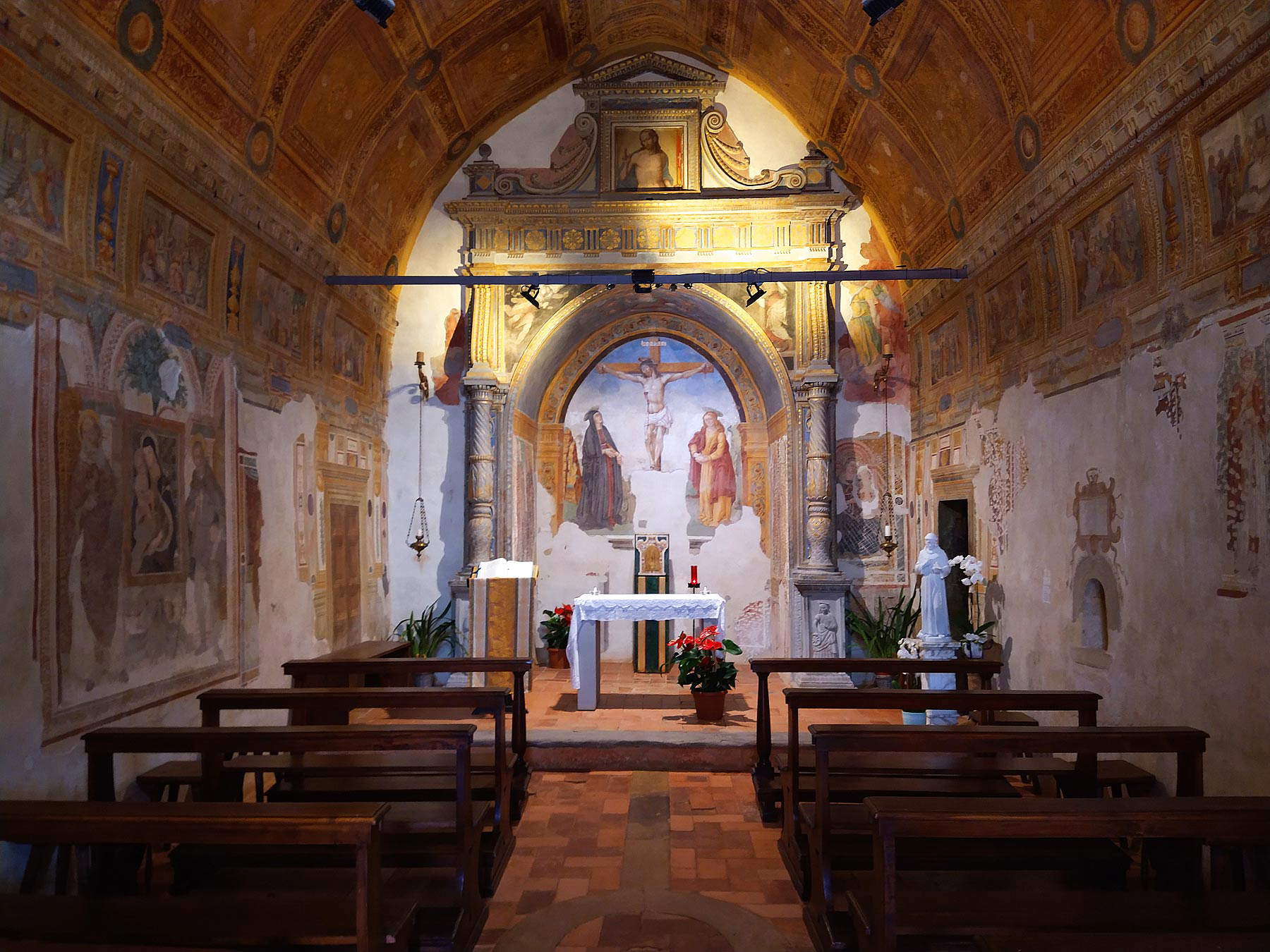
The church’s present appearance reflects the various vicissitudes that Santa Maria della Vittoria has experienced over the centuries: the gabled façade, despite its austere appearance that might make it look medieval, was extensively remodeled in the sixteenth century (the only medieval portion of the exterior is a small Romanesque window that opens at the back, and which has an archway where a cross and four leaves arranged in a star shape are carved), a period to which the elegant pietra serena portal with the inscription Deiparae ac im(m)aculatae V(ir)g(in)i Maria dicatu(m) also dates (it is dedication to the “Immaculate Virgin Mary Mother of God”) surmounted by a round-arched window, from which the light that illuminates the interior comes, and century in which the entire building was renovated. The ribbed bell tower that ends the facade is also not original: it was in fact built between 1934 and 1936, with forms that imitate the ribbed bell towers of medieval churches in the area.
Certainly more interesting is the interior, although it no longer corresponds to what St. Francis was supposed to see, since it too was extensively redone between the 16th and 17th centuries: it is a small, single-nave room with a pointed-arch vault, entirely covered with frescoes and decorations, although some of them, especially on the right wall, survive in a lacunose manner. As soon as one enters, one inevitably turns one’s eyes to the splendid altar: a large triumphal arch, a work of 1557 attributed to Marcantonio di Silvestro, with two twisted columns supporting two volutes above which rises an elegant entablature concussed, above, by the cymatium with the figure of the blessing Christ, who addresses the faithful directly. This is probably a work by the Gubbio painter Pier Angelo Basili (Gubbio, post 1550 - 1604), active in the late 16th century in the city’s churches. The spandrels of the arch are also painted: in fact, we glimpse there the figures of the Archangel Gabriel and the Virgin Annunciate, probably executed by Avanzino Nucci (Gubbio, c. 1552 - Rome, 1629), a collaborator of Niccolò Circignani, active in Counter-Reformation Rome from where he brought back suggestions that he was later able to express in his own city. The triumphal arch frames an interesting fresco of a Crucifixion with the Virgin and St. John the Evangelist, a late 16th-century work attributed to Orlando Merlini (Gubbio, ? - 1510), exemplified on Perugian models. The intrados is also decorated: in the arch there is a starry sky with the figure of the Eternal Father, while on the sides here is a holy bishop and St. Anthony Abbot on the left, and St. Paul and St. Peter on the right, works of schematic and modest workmanship, to be attributed to Ventura di Orlando Merlini. These frescoes are very ruined and look beaten up because they were covered in later periods (the holes that can be seen all along the painted surface were made to make the plaster adhere better to the wall). The back wall is completed with the lacunose figures of the curtain-holding angels on either side of the triumphal arch, and further below with an enthroned Madonna and Child.
Orlando Merlini’s son is probably also the author of the much-ruined frescoes along the right wall, which are also in a precarious state: note, in particular, a Madonna and Child between Saints Sebastian, Rocco and a Dominican saint (perhaps St. Vincent Ferrer) with a praying man (perhaps the commissioner of the fresco) kneeling at the latter’s feet. Better preserved, but also in a rather compromised state, is the Madonna della Quercia that can be admired on the same wall: the Virgin and Child are here flanked by a saint of difficult identification, holding a chalice in his hand, and Saint Roch. We do not know who the author of this fresco is, just as we do not have the name of the artist who painted the St. Mary Magdalene (or St. Mary of Egypt) that stands immediately nearby and of which we see a fragment. Of considerable interest, and of better quality as well as well preserved, is the illusionistic depiction of the door we find at the bottom of the wall, inserted to create symmetry with the door on the opposite side of the church, which leads to the sacristy.




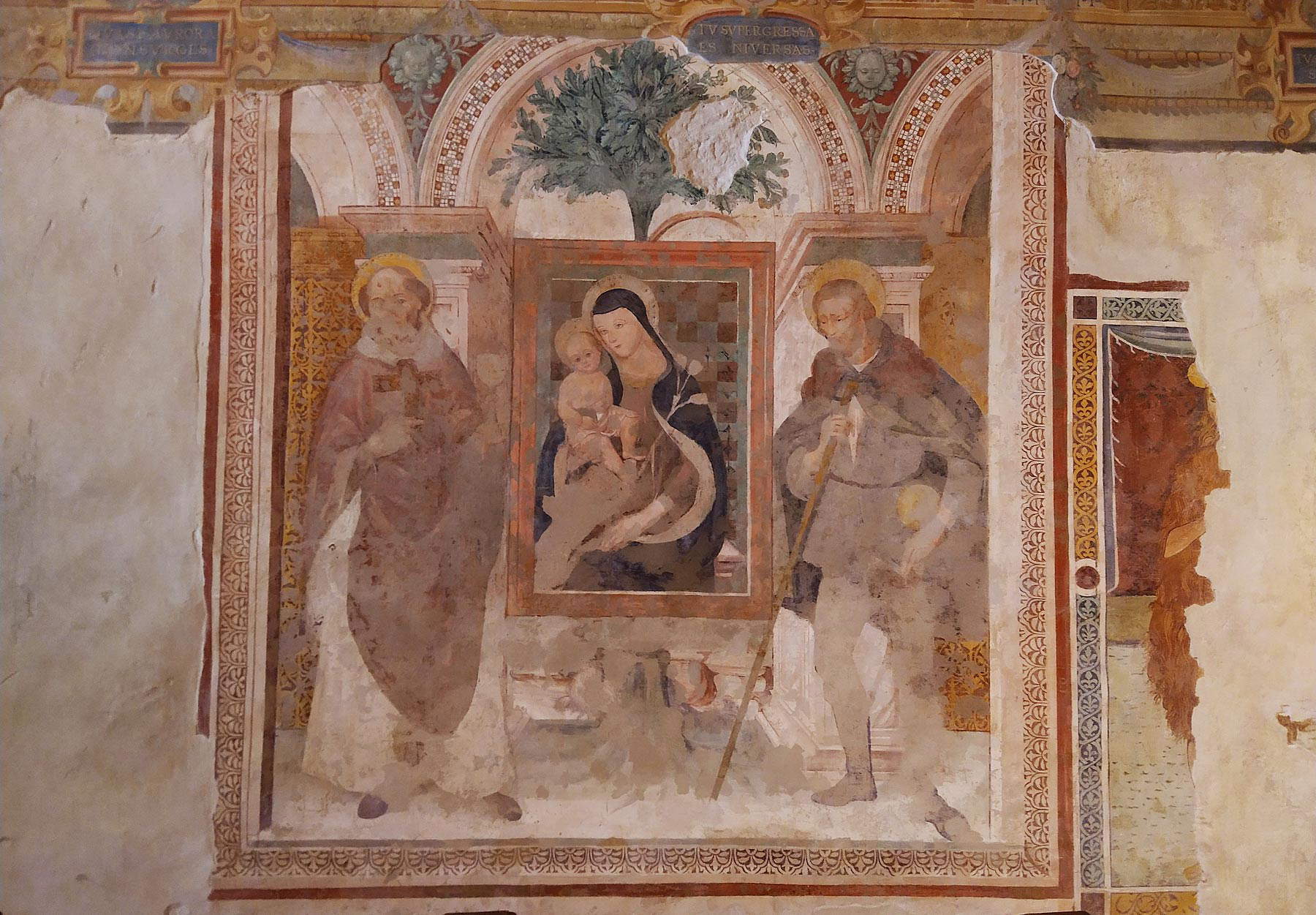
The entire upper part of the decoration has survived significantly more intact. Beginning with that of the ceiling: in the center, a cloud opens illusionistically (with a somewhat naïve perspective, but one to be appreciated in the attempt to bring to the periphery the artistic languages that had become established in the great centers) to show the faithful the figure of the Eternal Father who appears surrounded by a cloud and flanked by two angels holding the symbols of his power, namely the alpha and the omega, signifying that God is the beginning and the end of everything, and the globe, an allegory of the Almighty’s dominion over the world. The oculus that shows us the appearance of God manifesting Himself in golden light opens above thirty-four panels with plant decorations, the work of Benedetto Nucci (Gubbio, c. 1516 - c. 1596). Finally, running along the three sides of the church, including the counterfacade, are the Stories of Mary attributed to Giovanni Maria Baldassini (Gubbio, 1540 - 1601), although we are not sure if the hand is indeed his: eighteen panels, each of which originally had an inscribed sign to help identify the episode, the reading of which begins on the left side of the counterfacade, with the depiction of the tree of Jesse. This is followed by the entire narrative of the life of the Virgin, according to one of the most complete narratives to be found in a house of worship: here then is the expulsion of Joachim from the Temple, the announcement to Joachim, the meeting between Joachim and Anne (Mary’s parents) at the Golden Gate, the birth of the Virgin, the presentation in the Temple, the Virgin at work with the maidens, the choice of the bridegroom, and the marriage of the Virgin. It then continues on the right wall with the remaining episodes: the Visitation, the Nativity and the Adoration of the Shepherds, the Adoration of the Magi, the Circumcision of Jesus, the Flight into Egypt, the Visit of Elizabeth and John to the Holy Family, the Dispute of Jesus in the Temple. We return to the counter-façade, where on the right side we admire the Wedding at Cana and the Assumption of the Virgin.
It is perhaps these stories that are the most interesting element of the interior decoration of the church of Santa Maria della Vittoria: the painter who painted them, wrote the scholar Ettore Sannipoli, “is distinguished by an unpolished and unpolished style, at the same time naive and popular, but not trivial. One gets the impression that the run-of-the-mill rendering of figures and scenery depends rather on an underlying choice, that of preferring the writing of a simple and flat narrative in images, accessible to all, adhering to the dry dictate of the sources.” A narrative, then, of easy reading and perfectly in line with the dictates of the Counter-Reformation Church, which prescribed to artists images capable at the same time of being easily interpreted by the faithful, and of emotionally involving those who observed them in order to strengthen their faith. A simplicity that, in the case of Santa Maria della Vittoria, also responds to the needs of Franciscan worship, close to the humble, and for which images of vivid immediacy, capable of reaching the faithful immediately, are therefore congenial.
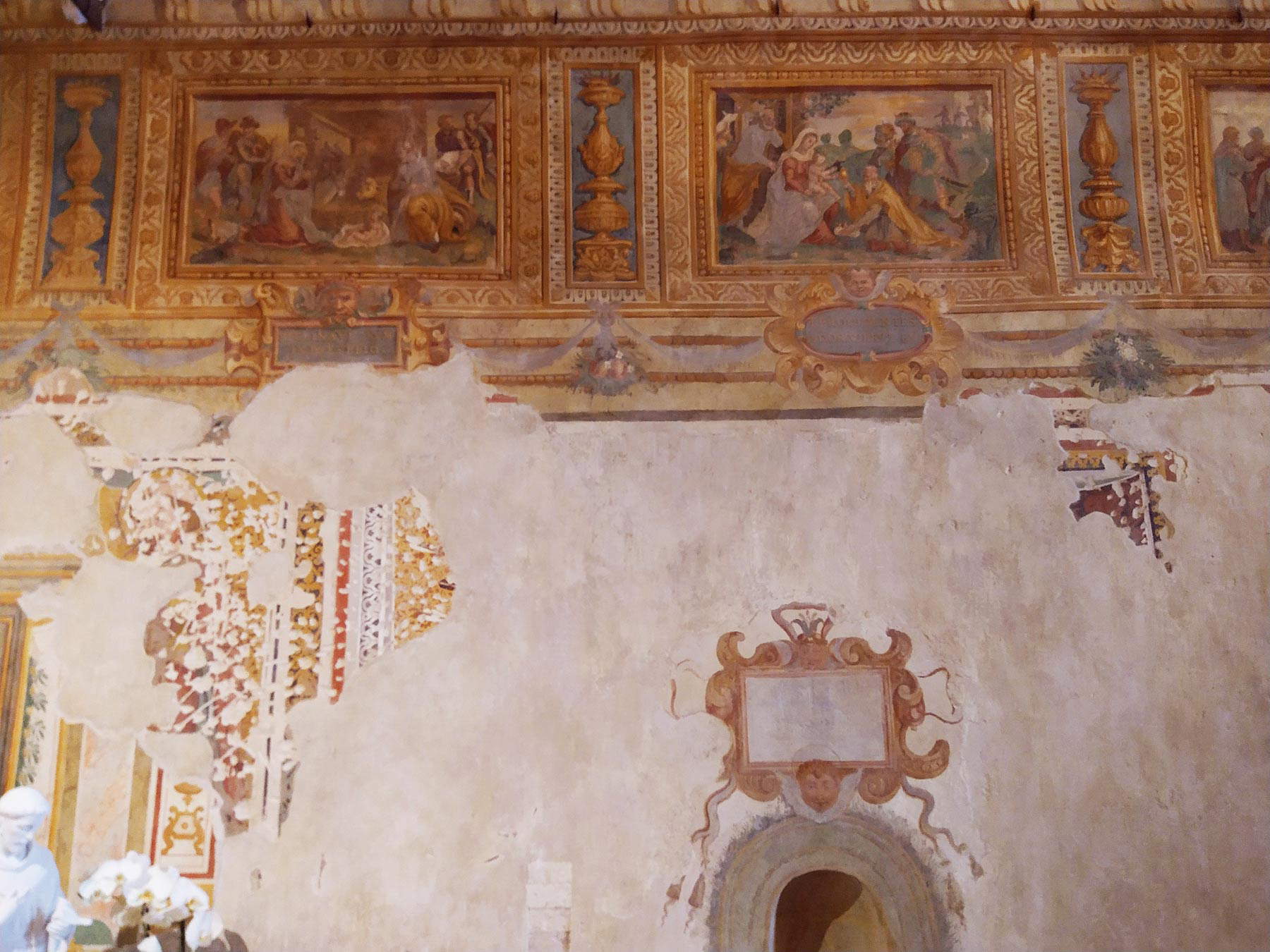

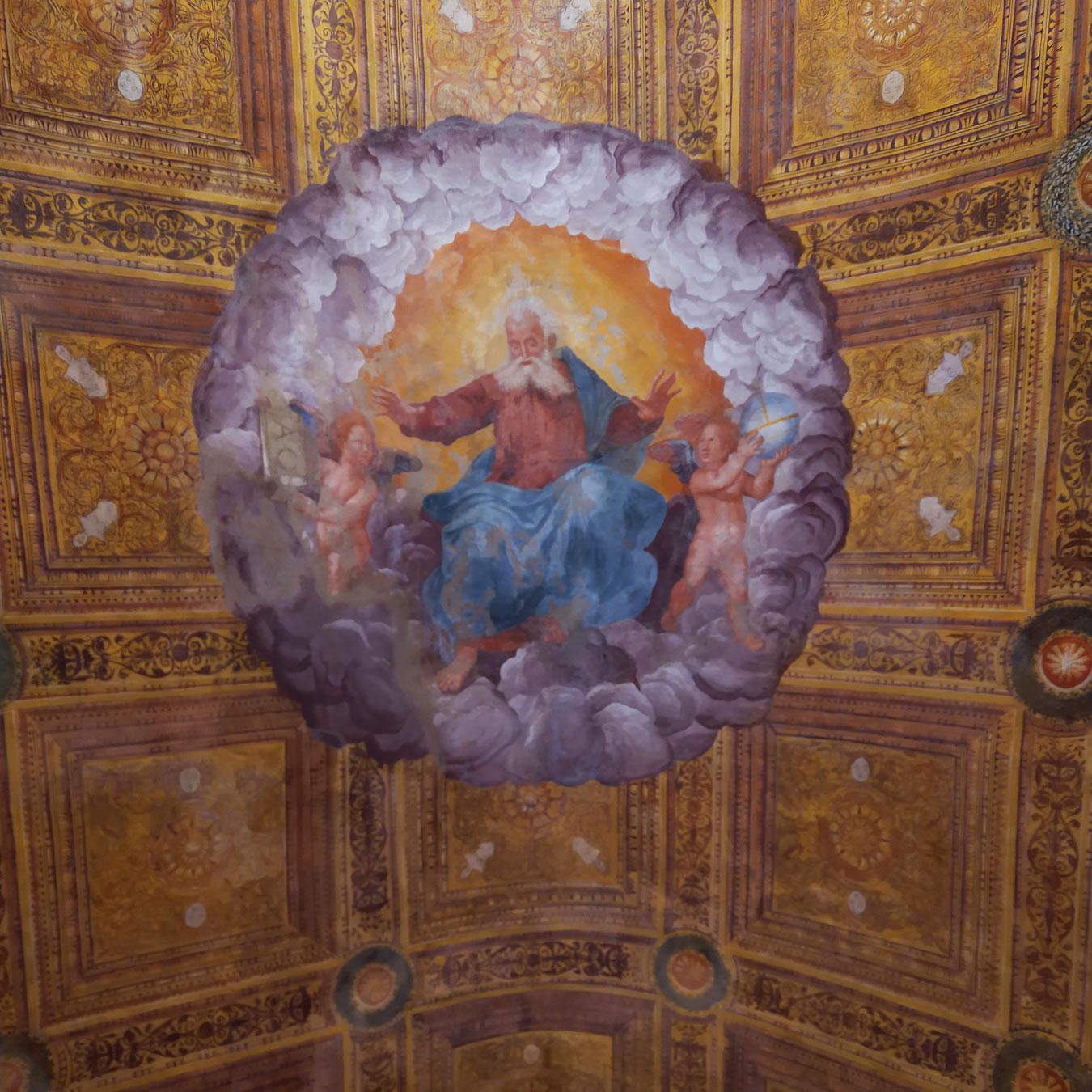
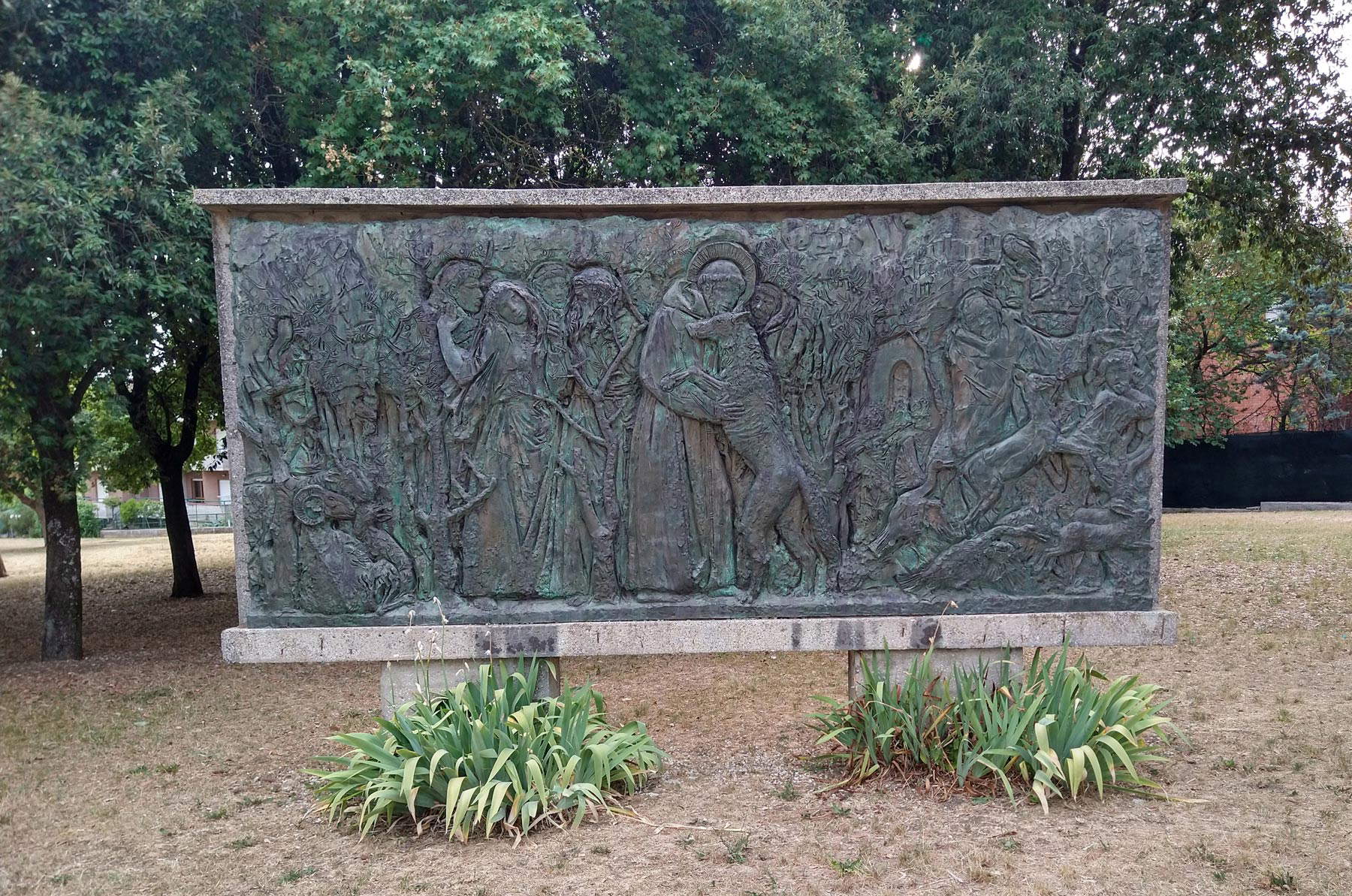

Little is therefore left of the church of Santa Maria della Vittoria that had known St. Francis when he tamed the wolf of Gubbio. A few monuments remain, however, to commemorate that episode, one of the many miracles that the Poverello of Assisi performed during his life marked by asceticism and the search for peace: the first, the work of Farpi Vignoli (Bologna, 1907 - 1997), also known for winning the gold medal in sculpture at the 1936 Berlin Olympics (one of the editions in which art was part of the disciplines of the games), was executed in 1973 and is located immediately in front of the church. It is a large bas-relief in which Vignoli depicted the climactic moment of the episode, with the wolf rising on his hind legs to seal his peace with St. Francis by giving him his paw (in the work, the wolf’s gesture becomes a true embrace with the saint), while the people of Gubbio, including their animals still running from the beast, watch in curiosity and amazement. Another monument is located not far away, in the parking lot beyond Via Frate Lupo (the road bordering the park was named precisely after the wolf tamed by St. Francis), and was created in 2002 by sculptor Francesco Scalici: the statue depicts the encounter between the wolf, which, as in Farpi Vignoli’s work, rises to give the saint his paw. Also, near the church of St. Francis, closer to the historic center, it is possible to admire a third monument, from 1997, the work of Roberto Bellucci: here, in a freer interpretation of the Fioretti episode, the wolf leans tame against the legs of St. Francis, who is on his knees, rests one hand gently on the wolf’s back, and raises the other toward the sky as if to thank God for the miracle.
Then there remain the suggestions, the atmosphere, the places, the air breathed by Saint Francis: every stone in Gubbio holds the memory of his passage and the miraculous episode that linked him to the Umbrian city and that is still a symbol of peace, as the rhyme of the Gubbio Storyteller recites: “Francis one day went toward the beast / who motionless remained without growling, / he stares at it fixedly.... and the paw takes her / like a brother who saves sister. / So peace was made and from that day on / the She-wolf, through the streets of the town, / was welcomed and took food / from all the children who ran around. / The she-wolf lived then inside a house / in the place that is today ’sta chiesetta.”
Warning: the translation into English of the original Italian article was created using automatic tools. We undertake to review all articles, but we do not guarantee the total absence of inaccuracies in the translation due to the program. You can find the original by clicking on the ITA button. If you find any mistake,please contact us.